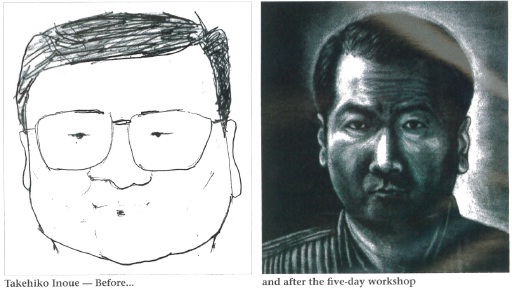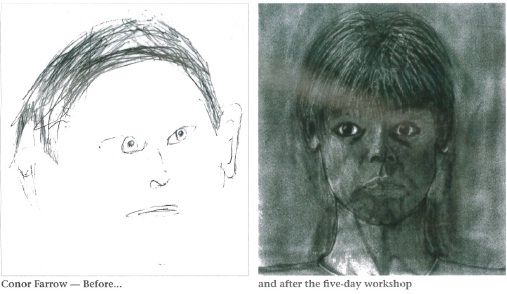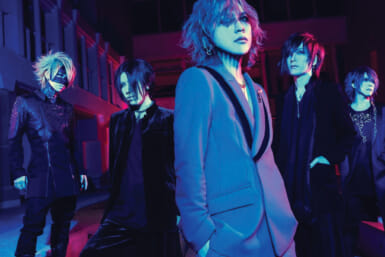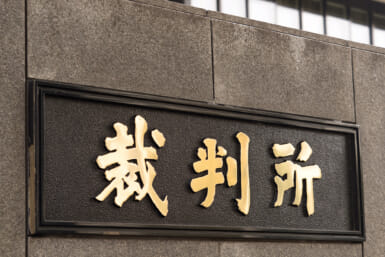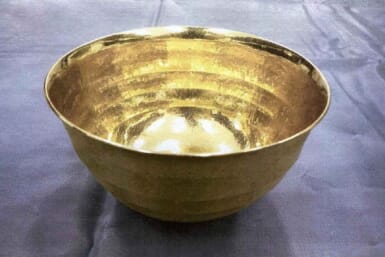Unlocking your potential through your right brain
by Josie Adams
Think you lack a creative bone in your body? Was the last time you drew something in third grade art class? Feeling a little strung out, stressed, tired, and uninspired? Well fortunately, there is a solution. Nestled in the hills of Moto-Azabu is RBR: The Center for Creative Arts, a place that promises to relax, inspire, and nurture that latent creativity and unknown possibility that CEO Mayumi Murata believes is hiding in all of us.
The brainchild of Murata, Lia Zalamia Howe, and Kristin Newton, the center offers a cornucopia of creative courses: from lessons in piano and acrylics to yoga, paper cutting, and Hip Hop for anyone, at any age. And while one can indeed learn the tricks of the trade here, all three agree — it’s not the point. Rather, RBR focuses on the mental process of creating art and the subsequent building of relationships between individuals, families, and the community. “We do not consider ourselves to be an art school,” says Murata. “We are a center — a place where everyone can feel comfortable and learn and create things they didn’t think were possible.”
“If you do things the same way as
everyone else, you get the same result
as everyone else; you need to get creative.”
Discovering potential tends to be a theme at RBR and nowhere are the results more visually poignant than in Newton’s portrait drawing class. Based on a series of exercises developed by Dr. Betty Edwards, the five-day course is aimed at turning off the dominant, symbolic, left hemisphere of the brain, which Murata suggests interferes with the ability to think clearly, and focuses on utilizing the less frequently used, non-verbal, right mode, which functions best for drawing. The ‘before and after’ self-portraits illustrate the significant changes in perception and confidence. The first picture is usually simple, child-like, and lifeless. After five days however, portraits become significantly more detailed and evocatively honest. “The right brain has the capacity to perceive and process visual information that can be utilized in the skill of drawing,” she says, “by teaching us to see from a different perspective, we can double our mind’s capabilities.”
And the ability to access the right side of the brain can translate easily into everyday routines, according to Newton, who says the class can develop precision, sequence, and organization skills, improve nonverbal communication, and build on the ability to explore patterns and make connections. Murata adds it can also greatly improve problem-solving skills. “The right brain is happiest when a situation is at its most complicated, while the left brain is the opposite — it just wants to get to a quick, simple conclusion without wasting time,” she says. “Learning how to separate a subject into small sections decreases the fear we feel when confronted by a seemingly insurmountable mountain of problems.”
They seem to be perfect skills for employees of companies wanting to get ahead, and in response, RBR now offers corporate courses. “To bring a company to the next level today you have to think outside the box,” says Newton. And President and Chief Executive Officer of AIG Star Life Insurance, Gordon Watson agrees. He has put most of his management through the Corporate Portrait Drawing course and they are now doing a second class with colors. “This kind of job normally requires a strong left brain,” Watson admits. “But if you do things the same way as everyone else, you get the same results as everyone else; you need to get creative.”
Though initially skeptical, Watson says the results were pretty amazing. “On the first day of class, none of us could draw.” Then one day Newton gave the class a famous portrait drawing to recreate, which Watson admits was extremely difficult — until the picture was turned upside-down. “If you stop looking at what you see and symbolizing it, thinking ‘this is a face,’ and rather start looking at the drawing as a series of lines and spaces, it becomes very easy to recreate.”
“Some people have said they get
headaches on their right side during
class, but that’s a good thing, because
it means… it’s working.”
This is what Newton calls the ‘Individual Breakthrough’, and it is an integral part of the five-day process. “Some people have said they get headaches on their right side during class, but that’s a good thing, because it means they’re using the right side of their brain and it’s working.” And Watson says it’s well worth it, “By the end of the five days, we could all draw.” More importantly though, he can detect a change in the office, “it’s been easier for me to communicate with everyone,” he says, “everyone seems a lot more genki.” And while Watson says it will take time to see how their new skills “translate into real business situations,” AIG management is so impressed with the results so far that they are planning RBR courses for their Shanghai, Singapore, and New York offices.
However the founders have no intention of expanding RBR into different countries. “This place could never be a franchise,” Murata says adding that it would defeat the whole purpose of RBR. “We want this place to always be community-based.” This concept is particularly evident on Friday mornings, when a group of elderly Japanese nursing home residents show up for their weekly Hip Hop class. Walking sticks are quickly pushed aside and it’s time for the ladies to get bootylicious. Sometimes the children in the cutting class next door come and join in. Murata explains that the class originated from a need for older Japanese in the area to mix with the ever-increasing foreign community, but has become a lot more than just that. “We have these 80-year-old women that think they can’t walk anymore, then after a while they get up and dance — it’s all about unearthing potential, it doesn’t matter how old you are.” “You should see these women after class,” Newton adds, “their faces are glowing.”
Additionally, Newton and Murata can tell a story about every picture on the wall of the center. “This was done by a 65-year-old former Mitsubishi employee,” Newton says pointing to an amazingly life-like portrait hanging on the wall. “He had just retired and was driving his wife crazy at home, so she forced him to take our drawing class. After some initial trepidation, he discovered a love for drawing. He is now the oldest student at Tama Art University.” Now that’s what I call unearthing latent creativity. “It just shows that nothing is impossible” Murata says, “and it’s never too late to try something new.”
For more information on additional courses, please contact RBR: The Center for Creative Arts: 1-5-15 Moto-Azabu, Minato-ku, Tokyo, 106-0046
Tel. 03-5475-6171 Fax: 03-5420-6230
www.rbrart.com.

